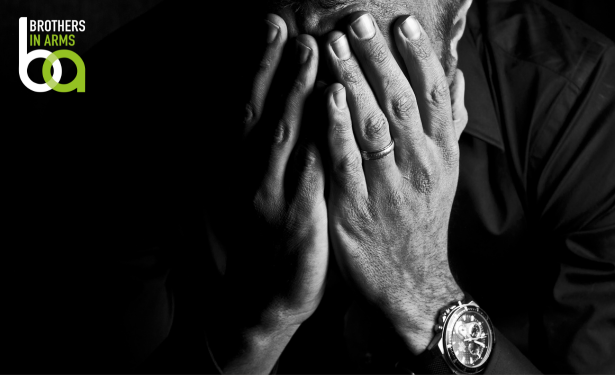Why Veterans Face a Higher Risk of PTSD: An Explainer for Supporters and Allies
Introduction: Understanding the Numbers
According to a landmark 2018 study by the National Epidemiologic Survey on Alcohol and Related Conditions (NESARC-III), male military veterans have a lifetime Post-Traumatic Stress Disorder (PTSD) prevalence of 7.7%. This rate is more than double the 3.4% found in civilian men. While it's easy to assume this gap is solely due to combat, the reality is far more complex. Here, we explore the intricate reasons behind this disparity, moving beyond common assumptions to examine the unique set of stressors that accumulate during and after military service. The military experience, even for those who never see combat, involves a distinct combination of pressures that can significantly increase the risk for PTSD.
--------------------------------------------------------------------------------
1. The Core Issue: It's More Than a Single Event
A fundamental difference between military and civilian trauma is the concept of cumulative stress. While civilian trauma often stems from a single, isolated incident, veterans frequently endure repeated and prolonged stressors that build up over time. This continuous exposure creates a psychological burden that is fundamentally different from what most civilians experience.
The table below contrasts the nature of trauma exposure for these two groups:
|
Military Veteran Experience: |
Typical Civilian Experience: |
|
• Prolonged and often multiple deployments. |
• Severe accidents (e.g., car crashes). |
|
• Repeatedly witnessing death or severe injuries. |
• Sudden natural disasters (e.g., earthquakes, floods). |
|
• The constant pressure of a hierarchical command structure. |
• Physical or sexual assaults. |
|
• Moral injuries: Profound psychological wounds from actions (or inactions) that violate one's core ethical beliefs, leading to deep guilt and distress. |
|
|
• The unpredictable and chronic nature of modern military operations. |
"The cumulative effect of military service extends beyond the battlefield, embedding stressors into daily life that civilians rarely encounter." — Dr Katherine Magruder, Epidemiologist, Medical University of South Carolina
Understanding this cumulative effect is the first step. The next section will break down the three most significant factors that contribute to these higher PTSD rates in veterans.
--------------------------------------------------------------------------------
2. Three Key Factors Driving Higher PTSD Rates in Veterans
Three unique dynamics of military life significantly contribute to the higher prevalence of PTSD among veterans: the continuous physiological "wear and tear" of stress, a culture that can discourage showing vulnerability, and the profound challenges of returning to civilian life.
2.1 Factor 1: The "Allostatic Load" of Continuous Stress
A key concept for understanding the impact of military service is "allostatic load." This is not just a metaphor; it is a physiological process describing the cumulative "wear and tear" on the body and brain caused by chronic exposure to stress. Experiences like multiple deployments force the body’s core stress-response systems, like the hypothalamic-pituitary-adrenal (HPA) axis, to work overtime. This eventually disrupts their ability to regulate properly, making an individual more biologically vulnerable to the long-term effects of trauma.
-
Supporting Evidence: A meta-analysis published in PLOS One found that veterans with longer cumulative deployments had significantly higher rates of PTSD, underscoring the additive impact of sustained stress.
"PTSD in veterans is not just about combat; it’s about the accumulation of stressors that reshape the individual’s psychological and biological baseline." — Dr Rachel Yehuda, Leading Trauma Researcher
2.2 Factor 2: The "Healthy Warrior Effect"
Military culture rightly emphasises resilience, strength, and operational readiness. However, a side effect of this is the "healthy warrior effect"—a phenomenon where service members feel pressure to suppress or underreport signs of distress to avoid appearing weak or being deemed unfit for duty.
The primary consequence is that it complicates and delays diagnosis. Research shows that male veterans delay seeking care longer than any other demographic, often due to stigma and fear of career repercussions. By the time a service member or veteran seeks help, acute symptoms may have become chronic and more difficult to treat.
-
Supporting Evidence: A 2011 study by Warner et al. found that anonymous surveys revealed significantly higher rates of PTSD symptoms among service members compared to their official post-deployment health assessments, highlighting the powerful effect of underreporting.
2.3 Factor 3: The Challenge of Reintegration
For many veterans, the transition back to civilian life can be a major stressor in itself. Military life is defined by its structured support systems, deep camaraderie, and a shared sense of mission. Leaving that environment can create a profound "void," stripping away the very relationships and routines that once helped buffer stress. This loss can lead to intense feelings of isolation, which amplify psychological distress and make veterans more vulnerable to the long-term effects of past traumas.
"The transition from military to civilian life often dismantles the very support systems that buffered stress during service." — Dr Rachel Yehuda, Leading Trauma Researcher
While these three factors are central to the issue, a veteran's specific era of service and their age when they served also play an important role.
--------------------------------------------------------------------------------
3. Other Influential Factors: Service Era and Age
In addition to the core factors, a veteran's demographic profile and the context of their service can influence their risk for PTSD.
-
Service Era: The nature of warfare has changed, and so has its psychological toll. Veterans of Operation Enduring Freedom (OEF) and Operation Iraqi Freedom (OIF) show higher PTSD rates (13-20%) than Vietnam-era veterans (9-12%). This is attributed to factors like the prevalence of multiple deployments—which creates a higher "allostatic load" (the cumulative physiological wear and tear discussed earlier)—and the unique stressors of modern combat, such as the constant threat of improvised explosive devices (IEDs).
-
Age: Younger veterans (ages 18-24) are at the highest risk for developing PTSD. This is often due to having less developed coping mechanisms and less life experience to draw upon when managing traumatic events.
-
Pre-Service Hardship: Adversities experienced before joining the military can also increase vulnerability. Studies show that a history of pre-service hardship, such as childhood maltreatment, can increase an individual's susceptibility to PTSD by up to 2.4 times.
These layers of influence create a complex picture, but a few key takeaways can help bring clarity to this important topic.
--------------------------------------------------------------------------------
4. Conclusion: Your Key Takeaways on Veteran PTSD
To be an effective supporter and ally, it’s essential to move beyond stereotypes and understand the unique factors contributing to higher PTSD rates in veterans. Here are the most important insights to remember:
-
The Risk is More Than Double: The lifetime PTSD rate for male veterans (7.7%) is more than twice that of civilian men (3.4%). This significant gap is a call to action for greater awareness and support.
-
Focus on Accumulation, Not Just Incidents: The key difference is the accumulation of prolonged stressors. Unlike civilian trauma, which is often tied to a single event, PTSD in veterans is frequently the result of sustained "wear and tear" from deployments, hierarchical pressures, and moral injuries.
-
Recognise That Culture Can Be a Barrier: The "healthy warrior" mindset may prevent a veteran you know from asking for help. Your proactive, non-judgmental support is vital because they may be conditioned to downplay their distress to avoid appearing weak.
-
Understand the Return Home is a Critical Phase: The transition to civilian life is not an endpoint but a major risk factor. The loss of military support systems can create a void of isolation that leaves veterans more vulnerable and exacerbates the effects of trauma. Acknowledging this challenge is a crucial first step in offering meaningful support.

